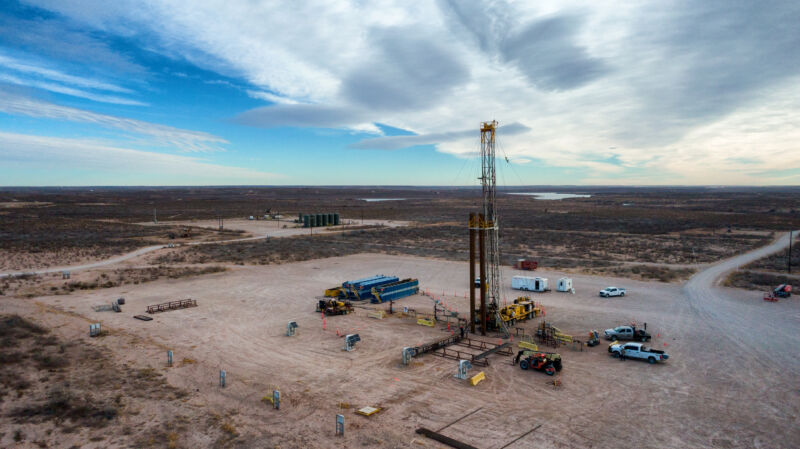
On the outskirts of the small town of Folschviller in eastern France stand three nondescript sheds. One of these temporary structures has recently become a hive of activity due to a continuous stream of visitors, including scientists, journalists, and the public.
The shed sits above a borehole first drilled in 2006 and houses a gas measurement system called SysMoG, which was originally developed to determine the underground methane concentration. While the device did detect almost pure methane (99 percent) at a depth of 650 meters, probing further down, the borehole resulted in an unexpected and surprising discovery: hydrogen in high concentration. “At 1,100 meters, the concentration of dissolved hydrogen is 14 percent. At 3,000 meters, the estimated concentration could be as high as 90 percent,” Jacques Pironon, director of research at GeoRessources lab at the Université de Lorraine, said.
Based on the estimates of methane resources and the concentration of hydrogen detected so far, scientists have conjectured that the Lorraine region in eastern France, of which Folschviller is a part, could contain 46 million tons of white—or naturally produced—hydrogen. That would make it one of the world’s largest known hydrogen deposits.
Looking for something else
This remarkable discovery was not the objective of the project, called Regalor. Instead, it aimed to determine the feasibility of methane production in the Lorraine region and to record the presence of traces of other gases. “Our original research was related to the study of carboniferous sediments in northeast France. This was important as Lorraine was one of France’s largest coal-producing regions,” Pironon said.
According to Pironon, after coal production ended in Lorraine in 2004, a company called Francaise de L’Energie proposed sourcing methane from the region’s vast coal fields. Following this, the regional government sought the expertise of Laboratoire GeoRessources to determine if such a project was realistic.
“As a part of this project, we developed a new tool with the French-Swiss company called Solexperts. It consists of a patented probe SysMoG that can be lowered by a logging winch to depths of 1,500 meters,” he said.
The probe is equipped with a membrane that allows the separation of gases from water in which they are dissolved. “As a result, the gases can be pumped to the surface for analysis. This is a new concept. In the past, determining the presence of gases underground involved bringing the water from underground to the surface and degassing the water for the analysis.”
To detect the presence of methane and to characterize it, a 1,250-meter borehole, which had been drilled more than 15 years ago, was monitored. At 600 meters, the team found 99 percent of the gas dissolved in the water was methane, while just 1 percent was hydrogen, which, according to Pironon, isn’t out of the ordinary.
“Later, we had the opportunity to make measurements until the bottom of the borehole. We noticed a constant increase in hydrogen from 600 to 1,250 meters. We detected the hydrogen concentration to be around 20 percent at the bottom of the borehole,” he remarked.
How big is the deposit?
Soon, the researchers will start taking measurements in three other boreholes at similar depths to understand if the hydrogen concentration remains high as you move laterally from the site of the original borehole. “If the concentration is similar, the next step, which is being discussed with the authorities, would be to drill a hole 3,000 meters deep to validate the evolution of the hydrogen concentration with depth,” he said.
The deeper borehole could also throw up another surprise. “Besides knowing the level of hydrogen concentration, we will also know if hydrogen is present in dissolved form or in gaseous state at these depths,” Pironon said.
This study could also shed light on the source of this hydrogen. According to Pironon, there are two hypotheses, one of which is related to the presence of the mineral siderite. “Hydrogen could be produced by the reaction between water and siderite, which is made of iron carbonates. We consider that the siderite could be oxidized by water molecules to produce hydrogen. The oxygen then combines with iron to produce iron oxide.”
According to Pironon, the other hypothesis relates its presence to the chemical processes that form coal, which, along with the release of methane, can also produce hydrogen.
Given that Lorraine has one of the world’s biggest coal basins and boasts 6 km of sediments, Pironon and his research colleague Philippe de Donato are keeping their fingers crossed on the new tests confirming the estimates of hydrogen present under the ground on which the three innocuous sheds stand.
With hydrogen tipped to be the fuel of the future because of its promise of net-zero emissions, the discovery of vast quantities of what’s termed “white hydrogen” could prove to be a shot in the arm for the transition to clean energy.
Dhananjay Khadilkar is a journalist based in Paris.
https://arstechnica.com/?p=1969579

